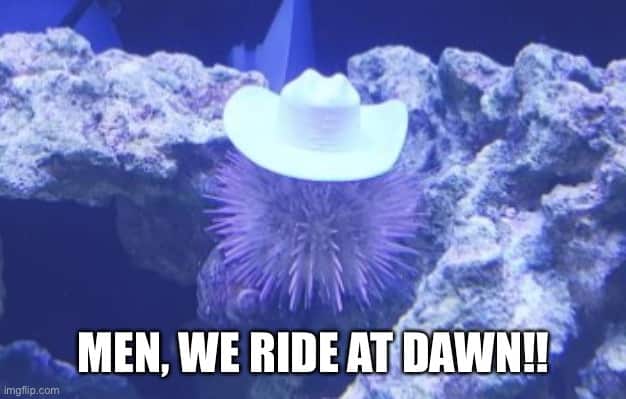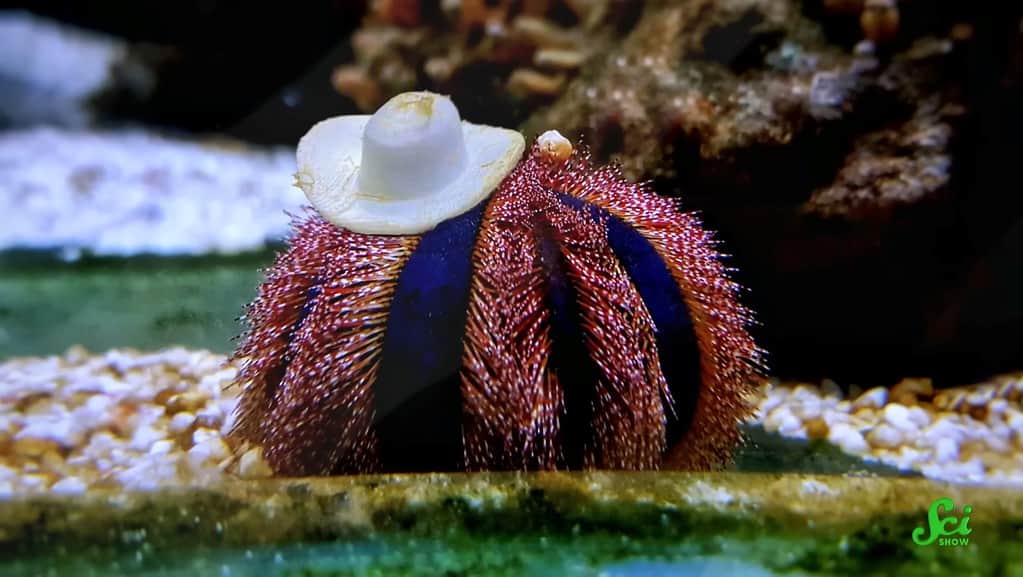
It almost sounds too funky to be true, but sea urchins in aquariums are wearing tiny hats — and there’s a very good reason for that. Scientists believe that sea urchin hats offer protection and camouflage, both from predators and from the sun’s rays. Yes, really.
Fashion for echinoderms
There are almost 1,000 known sea urchin species, inhabiting every ocean depth zone from the seashore to 5,000 meters (16,000 ft) down. These spherical creatures have hard shells and spines that protect them from predators. But they enjoy every bit of protection they can get.
In the wild, sea urchins (which can move slowly by crawling with their tube feet or propelling themselves with their spines) sometimes cover themselves with rocks or shells. This behavior is not entirely understood, but experts believe they do it to protect themselves from predators and UV rays, and also add a bit of extra weight that helps them stay in place and not be washed away during storms. Sea urchins are particularly vulnerable to UV radiation in shallow waters, so covering up can be a way to shield themselves from sunlight.

Aquarists took note of the sea urchin had trend when a Colorado aquarium enthusiast named Wilson Souza started making custom hats for his 120-gallon saltwater aquarium. Initially, Souza’s designs were meant to be functional, not stylish — they were merely bowl-like 3D prints. But then, he started experimenting with cowboy hats, Viking hats, and even a fancy topper.
His photos became an instant hit on aquarium forums, where his approach was replicated by other enthusiasts. Many shared their success, as well as some of the funny stories along the way (such as one user imagining explaining to their spouse why they were buying a sea urchin hat).
Why do sea urchins wear hats?
Souza’s hypothesis also drew the eye of some researchers, including Emma Verling, who holds a doctorate in marine ecology from University College Cork. Cork told Newsweek that for the urchins, it takes a lot of energy to do this, so it must do them some good — but it’s not entirely clear why they do it. For instance, even deeper species that aren’t subjected to UV light do it, so it appears to be a complex behavior with multiple causes. Verling says she’s seen urchins using all sorts of materials and objects for this behavior, including “shells, stones, bits of macroalgae, bottle tops, and pieces of wood.” Verling also says there’s little risk of the hats actually hurting urchins, especially since they’ve been witnessed to do this behavior in the wild as well.
The fact-checking website Snopes also looked at the story, quoting Rich Mooi, curator of Invertebrate Zoology at the California Academy of Sciences who said the behavior is “very much the norm for a great many species.” Mooi also emphasized that this is a complex behavior, and identified camouflage as another potential cause for it.
However, Mooi also points out that calling these “hats” is a bit of a misnomer since sea urchins are spherical creatures and they don’t really have a head. In fact, their mouth is on the bottom and the anus is on top. So aquarium enthusiasts technically made butt hats for the sea urchins.
Just when you thought this story can’t get any better, it did.






